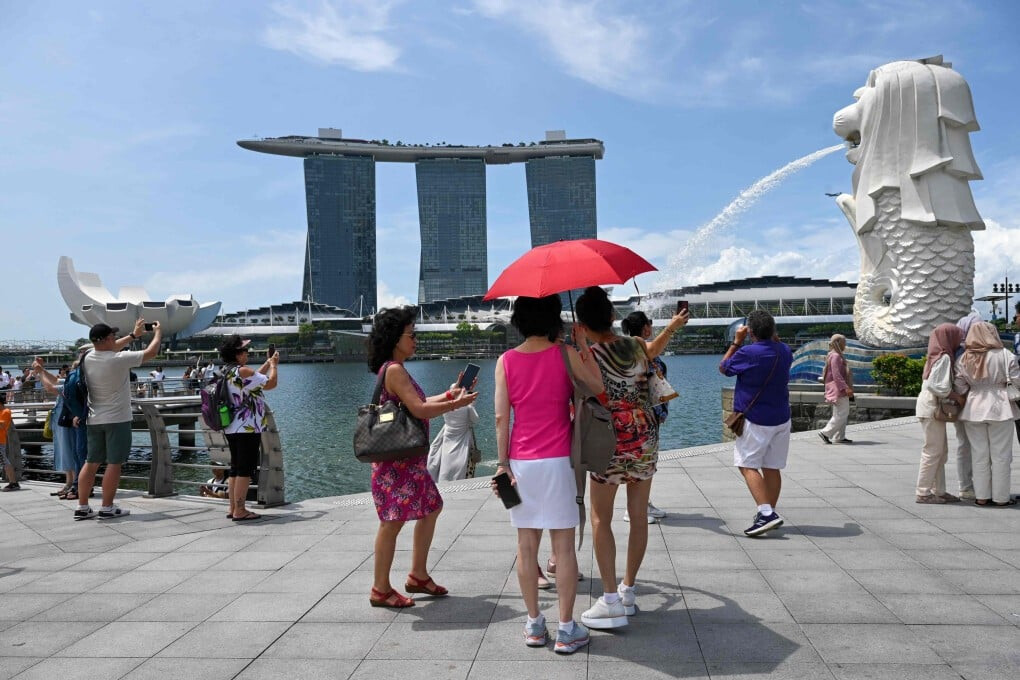
Singapore, celebrating its 60th year of independence, faces the dual challenges of an aging population and labor shortages while pursuing economic diversification amid a weakening multilateral order. The city-state is actively seeking to mitigate the impact of declining multilateralism, exacerbated by the potential return of Donald Trump to the US presidency, by diversifying its trade strategies.
To this end, Singapore has forged 27 bilateral and regional free trade agreements and strengthened trade ties with neighboring Malaysia and Indonesia. Collaborative efforts include the joint development of industrial and high-tech parks on Indonesia's Batam Island and participation in the Johor-Singapore Special Economic Zone, aimed at expanding Singapore-based businesses into Malaysia's Johor region.
However, Singapore grapples with labor and resource constraints, particularly land scarcity. Despite stringent measures like the dependency ratio ceiling, the number of foreign workers has surged from 1.2 million in December 2021 to 1.52 million in December 2023.
As of June 2024, Singapore's population comprises 544,900 permanent residents, 3.64 million citizens, and 1.86 million non-residents. The average age of citizens has risen from 42.8 years in 2022 to 43 years, with 19.9% of citizens aged 65 and above, a figure projected to reach 24.1% by 2030.
In 2023, 23,472 individuals were granted citizenship, a 1.7% increase from the previous year, while 34,491 received permanent residency. As the influx of new citizens remains steady, initiatives focusing on social integration and inter-ethnic and religious harmony have taken center stage.
Foreign labor and immigration have emerged as contentious issues ahead of the 2025 general elections, underscoring the need to maintain ethnic balance and racial harmony. The government categorizes ethnicity within a Chinese-Malay-Indian-Other framework.
The Ministry of Manpower manages foreign labor inflows by classifying source countries as traditional and non-traditional. Currently, non-traditional sources include Bangladesh, India, Myanmar, the Philippines, Sri Lanka, and Thailand, with Bhutan, Cambodia, and Laos set to join this category from June 1, 2025.
To sustain economic growth and its social contract with citizens, Prime Minister and Finance Minister Lawrence Wong unveiled a series of measures in the 2025 budget aimed at supporting Singaporeans. These initiatives focus on facilitating workforce transitions, enhancing employment support, and promoting lifelong learning, including increased Workfare Skills Support for low-wage workers and monthly training allowances for specific part-time and full-time courses.
In leveraging technology for growth, Singapore prioritizes AI capability development, aiming to triple its pool of AI practitioners to 15,000 as part of its updated National AI Strategy 2.0. The nation also seeks to capitalize on its geographical advantages by enhancing connectivity.
In the aviation sector, Changi Airport, which handled over 58.9 million passengers in 2023, is resuming the construction of Terminal 5 to maintain its competitive edge. The aviation sector contributes 3% to Singapore's GDP and employs approximately 200,000 people. The 2025 budget allocates an additional SGD 5 billion (USD 3.7 billion) to the Changi Airport Development Fund.
The maritime sector, contributing 7% to GDP and employing around 170,000, continues to enhance its geographical advantages through the development of the Tuas mega-port.
Given its resource constraints, Singapore's pursuit of carbon neutrality by 2050 necessitates increased reliance on neighboring countries. The 2025 budget allocates SGD 5 billion (USD 3.7 billion) to the Future Energy Fund.
Singapore aims to import 4 gigawatts of renewable energy by 2035, with agreements in place to import 1.2 gigawatts from Vietnam, 2 gigawatts of low-carbon electricity from Indonesia, and 1 gigawatt of renewable energy from Cambodia.
While investments in technologies like automation and AI offer pathways for growth, Singapore's aging workforce requires retraining and education to complement these strategies. Collaboration with key stakeholders, including labor unions, multinational corporations, and small and medium-sized enterprises, is crucial.
As Singapore seeks alternatives to support multilateral trade, it is leveraging sub-regional development and digital trade with like-minded partners. Enhanced connectivity, coupled with collaborations with sub-regional partners, is essential for a transition towards a more sustainable and green economy.
[Copyright (c) Global Economic Times. All Rights Reserved.]






























